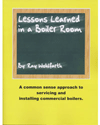In the book, Mills, Mansions, and Mergers, written by Edward G. Roddy, the rural community of Frye Village changed its name to Shawsheen Village in 1918 after Mr. Wood purchased much of the farmland there. The master plan was to expand his American Woolen Company from neighboring Lawrence into Andover where he would build an entire community for his "white collar" employees. "By relocating his managerial personnel to this idyllic locale, Wood assumed they would be happy and content and this would contribute even more to the success of the firm," Roddy writes.
His book tells of how Wood wanted to create the ideal community in his village where people lived and worked together. As you walk around the area that makes up this part of Andover, there are stories associated with many of the homes and buildings there that have been captured in Mill, Mansions, and Mergers. By the end of 1923, a mere 5 years after the change from Frye Village to Shawsheen Village, Wood's dream of the perfect community began to collapse, as the mill industry was changing forever, eventually leaving this town like so many other cities and towns in New England, never to return.
Living in Andover and not far from the mills, I have fond memories of the Shawsheen neighborhood, having spent many an hour growing up there. I remember the old steam engine trains with smoke billowing from their stacks as they passed by the mill complex and my house. Trains still pass by the mills, now known as Brickstone Square, but they just aren't billowing smoke out into the atmosphere anymore.
It's a family affair
I recall as a child watching an old black and white home movie someone took of my father at work in the mills. He worked there in the late 1930s before he went into the service during World War II. I arrived for my first day of work at mill No. 2 in 2002, more then 60 years after my father worked in this same building. Before I got there, my brother worked at the mills for Raytheon in the mid-1960s, as did my sister in 1967. Even my mother-in-law worked in the mills in the late 1950s up through the mid-1960s, also at Raytheon Company.
Before I joined Richard D. Kimball Company, Inc. (RDK), both my daughters were already at the mills, employed at RDK. While most readers know my daughter Amanda from her column "HVACR Designer Tips," my other daughter Kim also is an RDK employee working with computers, something they didn't have when my father was at the mills. My joining the firm rounded out three generations of McKew's working in the mill.
A firm's roots run deep
RDK has its own story of generations to add to this building's history residing in mill No. 2 building of the now three-mill complex. The firm's history dates back to the first generation of RDK engineers in 1897, when the company designed the first underground steam distribution system for Dartmouth College in Lebanon NH. Today, we continue to work with Dartmouth College, more then 100 years later providing commissioning services at the Dartmouth Hitchcock Medical Center.Another family generation story is RDK's marketing person Kirsten Eggert. I worked with her father Hank, beginning in 1965, and today, Kirsten and I are a second-generation team, working together to submit an engineering proposal or develop a PowerPoint presentation. I also worked with Hank's other daughter Leah before I got to the mills when she introduced me to the power of facility management through video taping of the process.
I'm sure people drive by the mills daily and yet never know the stories inside and outside these American Woolen Company buildings. They will never realize what a small community Shawsheen Village once was and the history it continues to enjoy with generations of people working in the mills. Now if my grandson, Owen, could join the mill when he grows up, I guess that would round out "A place where generations past present and future come to work." ES



